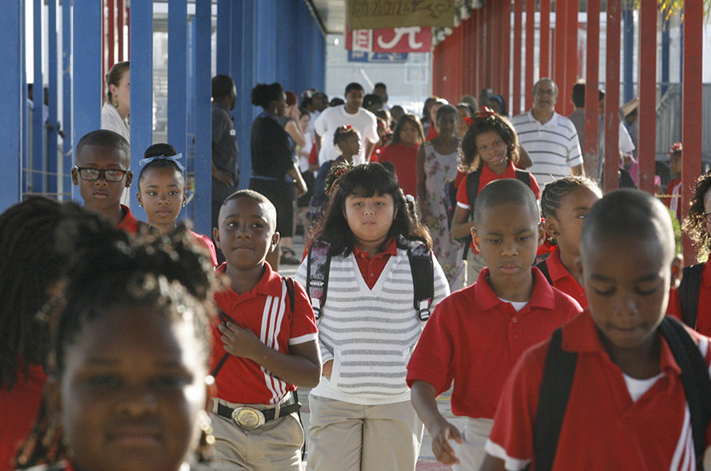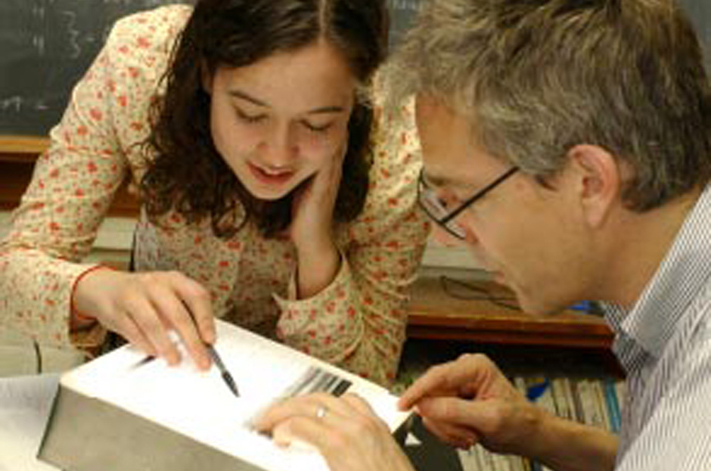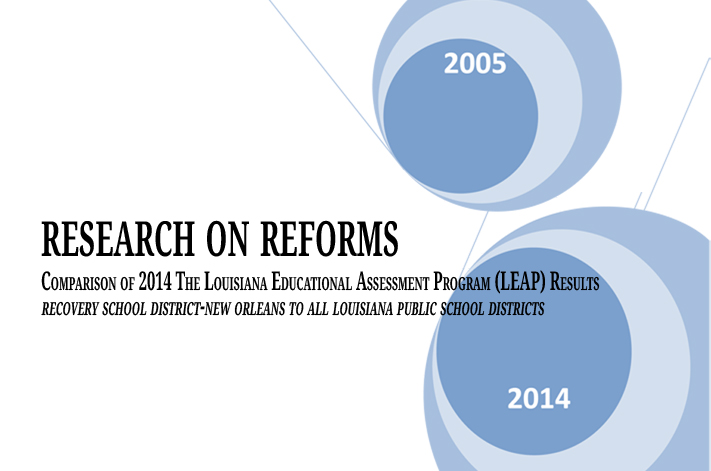Project Description
The English Language Arts Standards of the Common Core, K-5 and the Questions Which Have Been Hidden by Answers
In this article, we seek to lay bare questions of the almost-national answer the CCSS claim to be. Those questions are: How valid are the new standardized tests based on the CCSS and, indeed, how valid is any standardized test, especially when teachers’ evaluations will now be based, in part, on their students’ scores? Is the amount of money being spent on new tests worthwhile, or might the money be better spent elsewhere? What kind of reading stance—aesthetic and efferent—do the CCSS foster? How do the CCSS construct children? Questions are also asked about the CCSS text exemplars, the role of “close reading,” and of arts-based literacy.
Is the amount of money being spent on new tests worthwhile, or might the money be better spent elsewhere?
Eventually he finds oats in the granary to eat, then returns home. Perhaps even Tolstoy would suggest this almost plot-less story was not his best work and unlikely to interest anyone besides Tolstoy scholars. Bolded are the words: hare, vapor, threshing-floor, runners, caftans, jostled, hoarfrost, granary, kiln, and lair. Proctors of the test are told they may tell third graders what these words mean. It is assumed that all third graders in New York state will know without being told: glistened, squeaking, sleighs, moustaches (note the archaic spelling), snow-drifts, companions, wintergreen, snow-covered, wicker, glimmering, and ravine.
I (Jane) gave this test to my undergraduates in a literacy course in the education program at Mount Saint Mary College in Newburgh, New York, in the fall of 2012. Nineteen and twenty-year-old students struggled with it; for some, it was anxiety-producing: They turned red and their hands trembled. At the test’s end, they asked, of course, if they had had so much trouble with it, how would third graders do? One young woman wisely said it was wrong to teach new vocabulary when being assessed. And, anyone who has studied vocabulary knows children do not learn a new word by hearing the word one time, especially on the day of the test (Beck, McKeown, and Kucan, 2002; Blachowicz and Fisher, 2003).
Undergraduates answers also differed on this multiple-choice question:
In which scene does the hare reach his goal for the day?
- When he watches peasants on the road.
- When he plays with other hares in the field.
- When he eats on the threshing-floor.
- When he outruns the dog.
It is assumed that all third graders in New York state will know without being told: glistened, squeaking, sleighs, moustaches (note the archaic spelling), snow-drifts, companions, wintergreen, snow-covered, wicker, glimmering, and ravine.
What is a newly-arrived eight year old from the Caribbean living in an urban area to do? Despite years of claiming to have become free of cultural bias, test-makers never have, and never will, be able to write tests free of cultural bias. We have had 20 years of standardized testing; reports from the National Academies National Research Council and the National Center on Education and the Economy conclude standards-based learning and the accompanying tests have accomplished little-to-nothing (Bloomfield, 2011). To impose more standardized tests is an example of doing the same thing expecting to get different results, which is a costly experiment to carry out on the nation’s children. We are reminded of Wendell Berry’s (2009) commencement speech to the College of the Atlantic:
Understand that no amount of education can overcome the innate limits of human intelligence and responsibility. We are not smart enough or conscious enough or alert enough to work responsibly on a gigantic scale. In making things always bigger and more centralized, we make them both more vulnerable in themselves and more dangerous to everything else. Learn, therefore, to prefer small-scale elegance and generosity to large-scale greed, crudity, and glamour. (n. p.)
To administer a test on a story by Tolstoy—or anyone—to every child across the state of New York (or all states) is simply not responsible. We must learn to evaluate teachers and students on the local level, acknowledging the resources of the community.
What is a newly-arrived eight year old from the Caribbean living in an urban area to do? Despite years of claiming to have become free of cultural bias, test-makers never have, and never will, be able to write tests free of cultural bias.
Luis Moll’s (2010) Funds of Knowledge research could help us here. Moll and his colleagues show in their work teachers who make connections with children’s families and communities, with teachers becoming learners about families’ expertise. Funds of Knowledge defines “working-class families as possessing valuable cultural resources for instruction, challenging any perception that they would be lacking in such assets, while helping teachers establish relationships of trust with parents on which to base their pedagogy”(Moll and Cammarota, p. 289). Funds of Knowledge pushes against the deficit views many of us hold about children of color, the working-class, and the poor. When children are cast as “deficient,” they know it, and it impedes their learning. In the Tolstoy story, children who do not know glistened, squeaking, sleighs, moustaches, snow-drifts, companions, wintergreen, snow-covered, wicker, glimmering, and ravine will be cast as deficient.
The interrogation of Tolstoy’s story (“In which scene does the hare reach his goal for the day?”) leads to another question. What kinds of literacy experiences do the CCSS want for children? Louise Rosenblatt (1991) explains that readers take a stance along a continuum between the efferent and the aesthetic. In efferent reading, the purpose is to “‘carry off'” information (p. 444), like when one is reading directions to a new cell phone. Rosenblatt writes, “we can, if we wish, shift gears and pay attention to what we are thinking and feeling as we read”; this Rosenblatt calls an “aesthetic stance” (p. 444). This is not an either/or; readers may have both aesthetic and efferent experiences reading the same text. It is also not genre-specific. Some children may find aesthetic experiences in informational texts, others in poetry, novels, and drama. Rosenblatt explains:
The reader brings to the text a reservoir of past experiences with language and the world. If the signs on the page are linked to elements in that reservoir, these linkages rise into consciousness. The reader recognizes them as words in a language; the child is often slowly making such connections. All readers must draw on past experiences to make the new meanings produced in the transactions with the text. (p. 445)
From a critical literacy perspective, the CCSS seems to privilege efferent experience; for example, in the Common Core State Standards for English Language Arts and Literacy in History/Social Studies Science, and Technical Subjects, grade 1 students will “ask and answer questions about key details in a text” (p. 11). This standard, and others, lead to primarily efferent readings of text; in fact the word aesthetic does not appear in the CCSS until grades 11-12:
Analyze how an author’s choices concerning how to structure specific parts of a text (e. g., the choice of where to begin or end a story, the choice to provide a comedic or tragic resolution) contribute to its overall structure and meaning as well as its aesthetic impact. (p. 38)
Even here, the focus is not on the student’s aesthetic response. Middle and upper class parents will be able to attain aesthetic experiences for their children outside of school; working-class and poor parents may be less able to provide such experiences. And, if efferent reading is the goal of all in-school reading, how likely are students to be motivated to want to read?
When children are cast as “deficient,” they know it, and it impedes their learning.
The New York State Education Department (NYSED) is to be praised for its insistence on adding the “11th” standard before adopting the CCSS, such as in this standard in the New York State P-12 Common Core Learning Standards for English Arts and Literacy for grade 4 students: “Recognize, interpret and make connections in narratives, poetry, and drama to other texts, ideas, cultural perspectives, personal events and situations” and a. “self-select text based upon personal preferences” (p. 19). This addition will make aesthetic experiences more possible in New York state, at least, and it is aesthetic experiences that make it more likely children will want to continue to read.
So will self-selection. The CCSS claims to be “internationally benchmarked,” but does not say which nations. The city of Shenzen, China, a city of 15 million people, emphasizes free and pleasure reading and has the highest university pass rate in the country. The Chinese government is, wisely, encouraging the rest of China to follow Shenzen’s lead. Patsy Aldana (n. d.) writes that Shenzen “incorporates free reading, real books instead of text books, no testing on reading or teaching to the tests, classroom book clubs, excellent libraries, parental involvement, and 7 percent of school budgets for reading promotion mandated for all schools” (n. p.).
If we were to follow Shenzen’s lead, we would have to question the CCSS’s “special emphasis on informational text” (p. 4). It may be that in the course of self-selection many students do emphasize informational text. Others, however, may not. In his book Evoking Genocide: Scholars and Activists Describe the Works That Shaped Their Lives, Adam Jones (2009) asked 57 genocide scholars and human rights activists to “describe the works that shaped their lives”; for them it was 75% literary and artistic works and 25% informational texts that “evoked” them to their life’s work. To write the article, “Childhood Readers of the Classics: A Narrative and Biographical Account,” I (Jane) read 40 biographies and autobiographies of writers to learn the texts that were most meaningful to them when they were children; for 40 writers, it was 90% literary texts that evoked them to their life’s work (Gangi, 2006). Albert Einstein (as cited in M. Taylor, 2012) would say fairy tales are more likely than any other genre to make students college and career ready; Charles Darwin would recommend poetry and music. Darwin wrote:
My mind seems to have become a kind of machine for grinding general laws out of large collections of facts, but why this should have caused the atrophy of that part of the brain alone, on which the higher tastes depend, I cannot conceive . . . . If I had to live my life again, I would have made a rule to read some poetry and listen to some music at least once every week; for perhaps the parts of my brain now atrophied would thus have been kept active through use. The loss of these tastes is a loss of happiness, and may possibly be injurious to the intellect, and more probably to the moral character, by enfeebling the emotional part of our nature. (as cited in Sloan, 1983, p. 220)
We don’t have standard children; we only have children who are unique and have unique passions and interests. It is those we must nurture, which may mean varying our expectations of genre.
To their credit Sue Pimental and David Coleman (2012), “architects” of the English Language Arts CCSS, recently published a clarifying web log comment on the informational and literary texts. They write:
By high school, the Standards require that 70 percent of what students read be informational text, but the bulk of that percentage will be carried by non-ELA disciplines that do not study fictional texts. Said plainly, stories, drama, poetry, and other literature account for the majority of reading that students will do in the high school ELA classroom. (n. p.)
What questions to that answer might there be? Nine years ago, my (Jane’s) daughter allowed me to publish her experience with fiction in a social studies class:
For many children, for them to want to learn, their emotions must be engaged; only then will they care about facts. The CCSS primarily focuses on children’s heads, not their hearts and minds. The word analysis appears 94 times in the CCSS; the word feelings eight times, the word emotion twice in a clinical sort of way, and the word affect not at all. We do not want to overreach here, but wonder, if school-shooters had not been brought up during No Child Left Behind, which positioned children as numbers, not people, if more attention had been paid to their thoughts, feelings, emotions, voices, and unique interests and passions, would we have seen such an increase in violence? What can the leaders of the CCSS do to prevent another Newtown? Walter Mathis (2011) calls the CCSS “No Child Left Behind on steroids” (n. p.); children, and now, their teachers, are increasingly seen as digits.
John Dewey, one of the greatest philosophers of the twentieth century, once said, “knowledge is a small cup of water floating on a sea of emotion” (as cited in Fishman and McCarthy, 1998, p. 21). Although he was probably over-stating his case to make a point, neuroscience seems to bear out his intuition: Mind, body, and emotion are intimately connected (Caine and Caine, 1991; Damasio, 1994; Hardiman, 2003). On the CCSS, the National Association for the Education of Young Children (NAEYC) (2011) writes, “of particular concern was the absence of social and emotional development and approaches to learning, although the lack of attention to the whole child was generally noted” (p. 3).
For many children, for them to want to learn, their emotions must be engaged; only then will they care about facts. The CCSS primarily focuses on children's heads, not their hearts and minds.
Are kindergartners’ little bodies and minds able to attain these standards, as demanded by the CCSS?
Demonstrate understanding of the organization and basic features of print.
- Follow words from left to right, top to bottom, and page by page.
- Recognize that spoken words are represented in written language by specific sequences of letters.
- Understand that words are separated by spaces in print.
- Recognize and name all upper- and lowercase letters of the alphabet.
And Demonstrate understanding of spoken words, syllables, and sounds (phonemes).
- Recognize and produce rhyming words.
- Count, pronounce, blend, and segment syllables in spoken words.
- Blend and segment onsets and rimes of single-syllable spoken words.
- Isolate and pronounce the initial, medial vowel, and final sounds (phonemes) in three-phoneme (consonant-vowel-consonant, or CVC) words.* (This does not include CVCs ending with /l/, /r/, or /x/.)
- Add or substitute individual sounds (phonemes) in simple, one-syllable words to make new words. (p. 15)
Finland, to whom we are internationally benchmarked, thinks not; they do not begin to teach children to read until they are seven. Some children’s little five-year-old eyes are not developed enough to recognize and name all upper- and lowercase letters of the alphabet.
Teaching children to read should be a joyful experience. The word joy appears once in the CCSS (2010)
It is not possible to teach skills in isolation or to mandate what any young child will understand at any particular time” (n. p.). The teaching of skills in isolation cuts off children from essential processes in reading: syntax and meaning-making (Clay, 1991). Summarizing Halpern, NAEYC (2011) asserts that the CCSS “poses threats to the central ideas in early education as the K-12 system exerts a downward pressure of increased academic focus and more narrowed instructional approaches” (p. 4). What is gained by asking—and testing–children on more than of which they are capable? Teaching children to read should be a joyful experience.
The word joy appears once in the CCSS (2010):
Children at the kindergarten and grade 1 levels should be expected to read texts independently that have been specifically written to correlate to their reading level and their word knowledge. Many of the titles listed above are meant to supplement carefully structured independent reading with books to read along with a teacher or that are read aloud to students to build knowledge and cultivate a joy in reading. (p. 32)
Of the forty books recommended to cultivate joy, there are four multicultural books, and only one ethnic author, Grace Lin; her Where the Mountain Meets the Moon is recommended for grades four-to-five.
To their credit, the authors of the CCSS have recognized the default to Whiteness in the CCSS text exemplars;…
To their credit, the authors of the CCSS have recognized the default to Whiteness in the CCSS text exemplars; in November, 2012, Student Achievement Partners came to Newburgh, New York, to meet with members of Mount Saint Mary College’s Collaborative for Equity in Literacy Learning (CELL) to develop an expanded list of multicultural text exemplars for Appendix B. On the front page of The New York Times Sue Pimental was quoted, “‘we have really taken a careful look, and really think there is a problem . . . . We are determined to make this right'” (as cited in Rich, 2012, p. 1). Meanwhile, because teachers’ evaluations are soon to be tied to their students’ scores on CCSS tests, the currently recommended CCSS texts are flying off the shelves in bookstores and Amazon (www.Amazon.com).
Teachers of literacy and language arts must be mindful that the CCSS is now shifting its emphasis to more multicultural texts. (Please see free resources for multicultural texts from the Collaborative for Equity in Literacy Learning website http://cell.msmc.edu/literature/, and search Mary Ann Reilly’s blog: http://maryannreilly.blogspot.com/). Children must see themselves in books. The proficient reader research shows that, to become proficient readers, children must make text-to-self connections (Anderson and Pearson, 1984; Duke and Pearson, 2002; Harvey and Goudvis, 2000; Keene and Zimmerman, 1997; Mantione and Smead; 2003; Miller, 2002).
When we leave out children of color and the poor, in addition to reducing their ability to make the connections they need to make to become proficient readers, we are telling them they do not matter. The CCSS ELA standards text exemplars privilege class. Less than 7% of the exemplars represent working-class people and the poor—at a time when the majority of children are working-class or poor (Gangi, 2010); the Annie E. Casey foundation (2011) finds that 22% of children in America are poor. This translates to about 16.5 million children, with poverty being defined as a family of four living on less than $22,000 a year.
Children must see themselves in books…We might also ask about the kinds of pedagogies that would best help children of color and the poor.
We might also ask about the kinds of pedagogies that would best help children of color and the poor. The CCSS’s answer is close reading for all children, all 12 years; this approach seems to be grounded in the New Criticism of the 1920s and 30s (Reilly, 2010). It is one way to read text, but not the only way. There is, as already mentioned, reader response, or transactional reading, informed by Rosenblatt; and the critical literacy described by Luke and Freebody. We would add to that arts-based literacy and wonder if the authors of the CCSS would expand their definition of close reading to include multiple entries to text—performing, enacting, drawing, and digitally creating.
The arts enhance literacy in many ways; we argue that, by staying in the verbal-linguistic system, children learn less than when they are allowed to compose meaning across symbol systems. In my (Mary Ann’s) work, middle-school English Language Learners used Art Conversations, in which learners conduct non-verbal conversations with paint as the medium (Reilly, 2008). These students’ scores on the state tests had historically been “zero”; after Art Conversations and ways of deepening literacy learning, not test prep, their scores went from zero to a 50% pass rate. Perhaps Art Conversations could be tied to both close reading and the CCSS’s encouragement of illustration of text.
Music is mentioned once and song is mentioned once in the CCSS. Sanacore (2004), in an article called “Genuine Caring and Literacy Learning for African American Children,” describes how chants and song enhance the literacy learning of Black children, and it is well-known among experts on phonological and phonemic awareness how powerful music can be (Cunningham and Allington, 2011). In the common core, acting out is recommended for vocabulary words: “Distinguish shades of meaning among verbs describing the same general action (e.g., walk, march, strut, prance) by acting out the meanings” (p. 27). (When do the children taking the test on Tolstoy get to act out jostled, squeaking, and glimmering?) Drama has many more potentialities; in fact, Robert Marzano (2003) says that dramatic enactment is more powerful than telling or pictures:
[S]tudents require about four exposures to content to adequately integrate it into their existing knowledge base…. The types of experiences students have with content should be varied from exposure to exposure. In fact, it seems to be the case that some types of experiences produce more effective learning than others…. The most striking aspect of the findings reported…is the impact of dramatic instruction. It has the effect size of 1.12 immediately after instruction and an effect size of .80 twelve months after instruction. The other two types of experiences, although effective, do not approach this level. Verbal instruction [.74 and .64] involves telling students about content or having them read about it; visual instruction [.90 and .74] involves using pictures and other forms of visual representations. Dramatic instruction involves students being engaged in or observing some dramatic representation of content. (emphasis added, p. 113)
Ellen Winner and Lois Hetland (2000) reviewed 11,000 studies on the arts and academic achievement, and are able to make this claim:
When we leave out children of color and the poor, in addition to reducing their ability to make the connections they need to make to become proficient readers, we are telling them they do not matter.
Based on 80 reports…a causal link was found between classroom drama (enacting texts) and a variety of verbal areas. Most were of medium size (oral understanding/recall of stories, reading readiness, oral language, writing), one was large (written understanding/recall of stories), and one was small and could not be generalized to new studies (vocabulary). In all cases, students who enacted texts were compared to students who read the same texts but did not enact them. Drama not only helped children’s verbal skills with respect to the texts enacted; it also helped children’s verbal skills when applied to new, non-enacted texts. Thus drama helps to build verbal skills that transfer to new materials. Such an effect has great value for education; verbal skill is highly valued, adding such drama techniques costs little in terms of effort or expense, and a high proportion of students are influenced by such curricular changes. (emphases added, n. p.)
Storytelling is not mentioned in the common core, yet has limitless potential to develop the oral language required to be able to read (Brand, 2006; Cowen, 2003; Loban, 1963; Morrow and O’Connor, 1995; Trostle and Hicks, 1998). Educators of color have also recommended storytelling as an engaging literacy practice for Latino/Latina students (Barrera, Liguori, and Sales, 1993; Castellano, 2004); African American students (Ford, 2002; Flowers and Flowers, 2008), and American Indian students (Hoffman, 1992; Klug and Whitfield, 2003).
The CCSS asks us to rethink what constitutes important content in American public schools. What question might be asked about this answer? When American students in low-poverty school districts are compared internationally, the U. S. has the highest rate on the PISA, higher than Finland, Norway, Denmark, Belgium, Switzerland, Germany, and Canada (Riddle, 2010). How is it that practice at these schools and quality living conditions that typify these children’s lives are not our national priorities? Rather we seek to circumvent the issues of equity through standardization. Baldwin understood that engagements with the arts help us to lay bare questions to answers that the CCSS cannot suitably address.
Storytelling is not mentioned in the common core, yet has limitless potential to develop the oral language required to be able to read
References
Anderson, R. C., and Pearson, P. D. (1984). A schema-theoretic view of basic processes in reading. In P. D. Pearson, R. Barr, M. Kamil, and P. Mosenthal (Eds.), Handbook of reading research (pp. 255-292). Elmsford, NY: Longman.
Annie E. Casey Foundation. (2011). America’s children, America’s challenge: Promoting opportunity for the next generation. Retrieved from http://www.aecf.org/~/media/Pubs/Initiatives/KIDS%20COUNT/123/2011KIDSCOUNTDataBook/KCDataBook2011.pdf
Bakhtin, M. M. (1981). The dialogic imagination (M. Holquist, Ed.; C. Emerson, Trans.). Austin, TX: University of Texas Press.
Barrera, R. B., Liguori, O., and Sales, L. (1993). Ideas a literature can grow on: Key insights for enriching and expanding children’s literature about the Mexican-American experience. In V. J. Harris (Ed.), Teaching multicultural literature in grades K-8 (pp. 203-242). Norwood, MA: Christopher-Gordon.
Beach, R. (2011). Analyzing how formalist, cognitive-processing, and literacy practices learning paradigms are shaping the implementation of the Common Core State Standards. Retrieved from http://www.eric.ed.gov/PDFS/ED527334.pdf
Beck, I., McKeown, M. G., and Kucan, L. (2002). Bringing words to life: Robust vocabulary instruction. New York, NY: Guilford.
Berry, W. (2009). Abbreviated version of a commencement address given by Wendell Berry at College of the Atlantic in Bar Harbor, Maine. Retrieved from http://hope.journ.wwu.edu/tpilgrim/j190/Berry.speech.html
Blachowicz, C. L. Z., and Fisher, P. J. (2003). Best practices in vocabulary instruction: What effective teachers do. In L. M. Morrow, L. B. Gambrell, and M. Pressley, (Eds.), Best practices in literacy instruction (2nd ed.; pp. 87-110). New York, NY: Guilford.
Bloomfield, D. (2011, August 18). Research calls data-driven education reforms into question. Huff Post Education. Retrieved from http://www.huffingtonpost.com/david-bloomfield/education-reform-standardized-testing_b_882718.html
Brand, S. T. (2006). Facilitating emergent literacy skills: A literature-based, multiple intelligence approach. Journal of Research in Education, 21(2), 133-148.
Caine, R. N., and Caine, G. (1991). Making connections: Teaching and the human brain. Alexandria, VA: Association for Supervision and Curriculum Development.
Carlsson-Paige, N., Levin, D. E., and McLaughlin, G. B. (2012, May 26). How ed policy is hurting early childhood education [Web log comment]. Retrieved from http://www.washingtonpost.com/blogs/answer-sheet/post/how-ed-policy-is-hurting-early-childhood-education/2012/05/24/gJQAm0jZoU_blog.html#pagebreak
Castellano, J. (2004). Empowering and serving Hispanic students in gifted education. In D. Boothe and J. C. Stanley (Eds.), In the eyes of the beholder: Critical issues for diversity in gifted education. Waco, TX: Prufrock Press.
Clay, M. M. (1991). Becoming literate: The construction of inner control. Portsmouth, NH: Heinemann.
Common Core State Standards Initiative (2010). Common core state standards for English Language arts and literacy in history/social studies, science, and technical subject. Retrieved from http://www.corestandards.org/the-standards
Common Core State Standards Initiative (2010). Common core state standards for English Language arts and literacy in history/social studies, science, and technical subjects: Appendix B: Text exemplars and sample performance tasks. Retrieved from http://www.corestandards.org/assets/Appendix_B.pdf
Cowen, J. E. (2003). A balanced approach to beginning reading instruction. Newark, DE: International Reading Association.
Cunningham, P. M., and Allington, R. L. (2011). Classrooms that work: They can all read and write (5th ed.). Boston, MA: Pearson.
Damasio, A. R. (1994). Descartes’ error: Emotion, reason, and the human brain. New York, NY: Grosset/Putnam.
Duke, N. K., and P. D. Pearson. (2002). Effective practices for developing reading comprehension. In A. E. Farstrup and S. J. Samuels (Eds.), What research has to say about reading instruction (pp. 205-242). Newark, DE: International Reading Association.
Fishman, S., and McCarthy, L. (1998). John Dewey and the challenge of classroom practice. New York, NY: Teachers College.
Freire, P. (1970). Pedagogy of the oppressed. New York, NY: Continuum.
Flowers, T. A., and Flowers, L. A. (2008). Factors affecting urban African American high school students’ achievement in reading. Urban Education, 43(2), 154-171.
Ford, D. Y. (2002). The recruitment and retention of African American students in gifted education: Beyond deficit ideologies. In S. J. Denbo and L. M. Beaulieu (Eds.), Improving schools for African American students: A reader for educational leaders (pp. 31-43). Springfield, IL: Charles C. Thomas.
Gangi, J. M. (2010, December 11). Children of color and the poor left way behind in the National Governors Association and State Chiefs Common Core Standards Initiative: “Text exemplars” for kindergarten through 5th grade [Web log comment]. Retrieved from http://maryannreilly.blogspot.com/2010/12/guest-blog-children-of-color-and-poor.html
Gangi, J. M. (2006). Childhood readers of the classics: A narrative and biographical account. Women in Literature and Life Assembly Journal (WILLA), XIV, 18-25.
Gangi, J. M. (2004). Encountering children’s literature: An arts approach. Boston, MA: Pearson.
Ganske, K. (2000). Word journeys: Assessment-guided phonics, spelling, and vocabulary instruction. New York, NY: Guilford.
Gee, J. P. (2010). A situated-sociocultural approach to literacy and technology. In E. Baker (Ed.), The New Literacies: Multiple Perspectives on Research and Practice (pp. 165–193). New York, NY: Guilford Press.
Hardiman, M. (2003). Connecting brain research with effective teaching: The brain-targeted teaching model. Lanham, MD: Scarecrow.
Harvey, S., and Goudvis, A. (2000). Strategies that work: Teaching comprehension to enhance understanding. Portland, ME: Stenhouse.
Hoffman, E. (1992). Oral language development. In J. Reyhner (Ed.), Teaching American Indian students (pp. 132-142). Norman, OK: University of Oklahoma Press.
Jones, A. (Ed.). (2009). Evoking genocide: Scholars and activists describe the works that shaped their lives. Toronto, Canada: The Key Publishing House.
Keene, E. O., and Zimmerman, S. (1997). Mosaic of thought: Teaching comprehension in a reader’s workshop. Portsmouth, NH: Heinemann.
Klug, B. J., and Whitfield, P.T. (2003). Widening the circle: Culturally relevant pedagogy for American Indian children. New York, NY: RoutlegeFalmer.
Lave, J., and Wenger, E. (1991). Situated earning: Legitimate peripheral participation. Cambridge, U. K.: Cambridge University Press.
Leafgren, S. L. (2009). Reuben’s fall: A rhizomatic analysis of disobedience in kindergarten. Walnut Creek, CA: Left Coast Press.
Loban, Walter. (1963). The language of elementary school children: A study of the use and control of language and the relations among speaking, reading, writing, and listening. Urbana, IL: National Council of Teachers of English.
Luke, A., and Freebody, P. (1999). Further notes on the 4 resource model. Reading Online, Retrieved from http://www.readingonline.org/research/lukefreebody.html
Mantione, R. D., and Smead, S. (2003). Weaving through words: Using the arts to teach reading comprehension strategies. Newark, DE: International Reading Association
Marzano, R. J. (2003) . What works in schools: Translating research into action. Alexandria, VA: ASCD.
Mathis, W. J. (2011, August 25). No Child Left Behind on steroids. The Washington Post. Retrieved from http://www.washingtonpost.com/blogs/answer-sheet/post/no-child-left-behind-on-steroids/2011/08/25/gIQA92bzdJ_blog.html
Miller, D. (2002). Reading with meaning: Teaching comprehension in the primary grades. Portland, ME: Stenhouse.
Moll, L. C. (2010). Mobilizing culture, language, and educational practices: Fulfilling the promises of Mendez and Brown. Educational Researcher, 39(6), 451-460.
Moll, L. C., and Cammarota, J. (2010). Cultivating new funds of knowledge through research and practice. In K. Dunsmore and D. Fisher (Eds.), Bringing literacy home (pp. 289-305). Newark, DE: International Reading Association.
Morrow, L. M., and O’Connor, E. M. (1995). Literacy partnerships for change with ‘at-risk’ kindergarteners.” In Richard Allington, and Sean A. Walmsley (Eds.), No quick fix: Rethinking literacy programs in America’s elementary schools (pp. 97-115). New York:, NY Teachers College Press/International Reading Association.
National Association for the Education of Young Children. (2011). The common core standards: Caution and opportunity for early childhood education. Retrieved from http://www.naeyc.org/files/naeyc/11_CommonCore1_2A_rv2.pdf
New York State Testing Program ELA Common Core Sample Questions for Grade 3. Retrieved from: http://www.p12.nysed.gov/assessment/common-core-sample-questions/ela-grade-3.pdf
Pimental, S., and Coleman, D. (2012, December 11). The role of fiction in the high school English Language Arts classroom [Web log comment]. Huff Post Education. Retrieved from http://www.huffingtonpost.com/susan-pimentel/the-role-of-fiction-in-th_b_2279782.html
Rich, M. (2012, December 4). For young Latino readers, an image is missing. The New York Times. Retrieved from http://www.nytimes.com/2012/12/05/education/young-latino-students-dont-see-themselves-in-books.html
Reilly, M. A. (2010, August 20). Common core curricular mapping: Travels with a tour guide [Web log comment]. Retrieved from http://maryannreilly.blogspot.com/2010/08/common-core-curricular-mapping-travels.html#links
Reilly, M. A. (2008). Finding the right words: Art conversations and poetry. Language Arts, 86(2), 99-107.
Riddle, M. (2010). PISA: It’s poverty not stupid. The Principal Difference: Bridging Research and Policy to Practice for School Leaders. Retrieved from http://nasspblogs.org/principaldifference/2010/12/pisa_its_poverty_not_stupid_1.html
Rosenblatt, L. (1991). Literature-S.O.S.! Language Arts, 68, 444-448.
Sanacore, J. (2004). Genuine caring and literacy learning for African American children. The Reading Teacher, 57(8), 744-753.
Sloan, D. (1983). Insight-imagination: The emancipation of thought and the modern world. Westport, CT: Greenwood.
Taylor, M. (2012). 8 reasons why fairy tales are essential to childhood. Retrieved from http://imaginationsoup.net/2012/02/fairy-tales-are-essential-to-childhood/
Trostle, S., and Hicks, S. J. (1998). The effects of storytelling versus story reading on comprehension and vocabulary knowledge of British primary school children. Reading Improvement, 35(3), 127-136.
Winner, E., and Hetland, L. (2000). The arts and academic achievement: What the evidence shows. Executive Summary of Project REAP. Retrieved from http://pzweb.harvard.edu/Research/REAP.htm.
Jane M. Gangi is an Associate Professor in the Division of Education at Mount Saint Mary College in Newburgh, New York, where she teaches courses in literacy and literature. At the Mount, she is a member of the Collaborative for Equity in Literacy Learning (CELL). Her forthcoming book is Genocide in Contemporary Children’s and Young Adult Literature: Cambodia to Darfur. She may be reached at Jane M. Gangi
Mary Ann Reilly is the President of Blueprints for Learning, an organization that helps schools, especially in urban areas. She is the author, with Jane M. Gangi and Rob Cohen, of Deepening Literacy Learning: Art and Literature Engagements in K-8 Classrooms. Her blog, which features award-winning photography, essays on literacy, rhizomatics, and a host of other education-related topics, has over 60,000 followers. She can be reached at Mary Ann Reilly
This piece was reprinted by EmpathyEducates with permission or license. We thank the Authors, Jane M. Gangi and Mary Ann Reilly for their kindness, observations, research, and for giving voice to what we believe is a often ignored and yet vital conversation.










